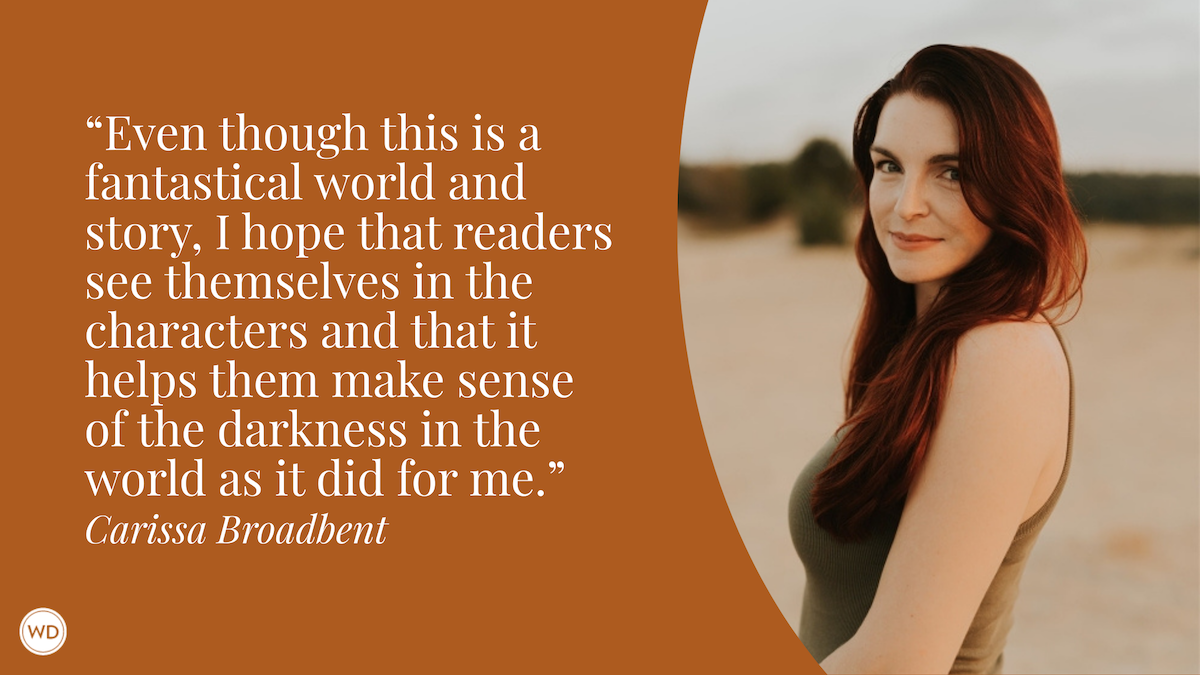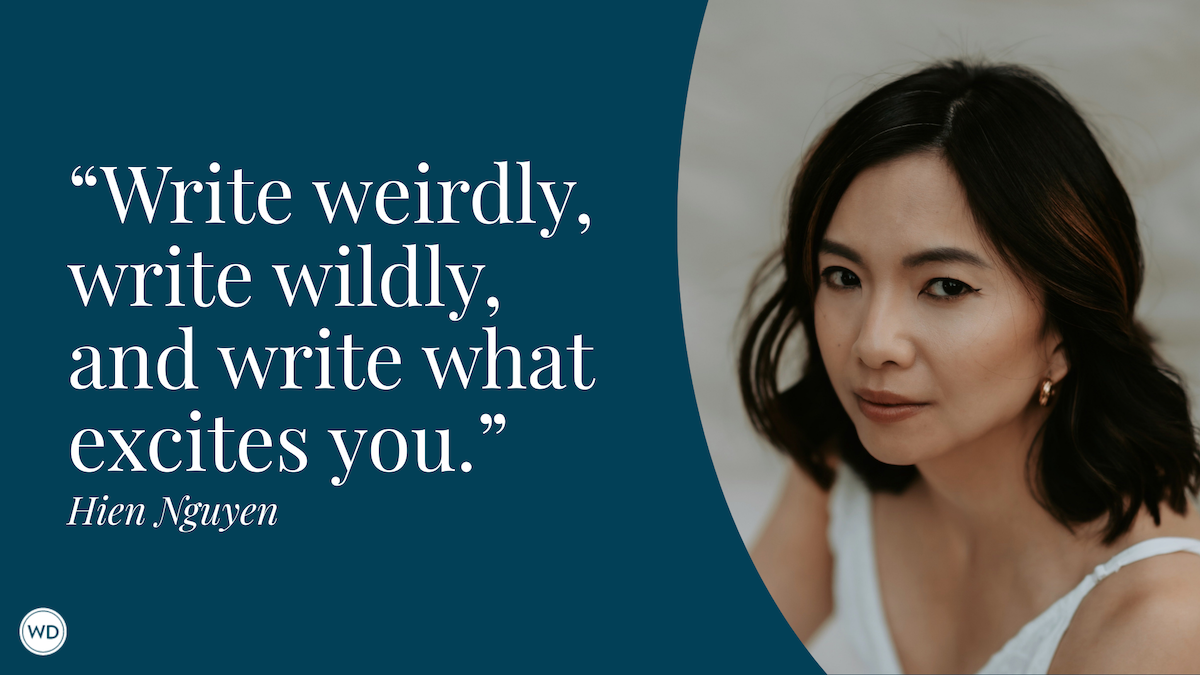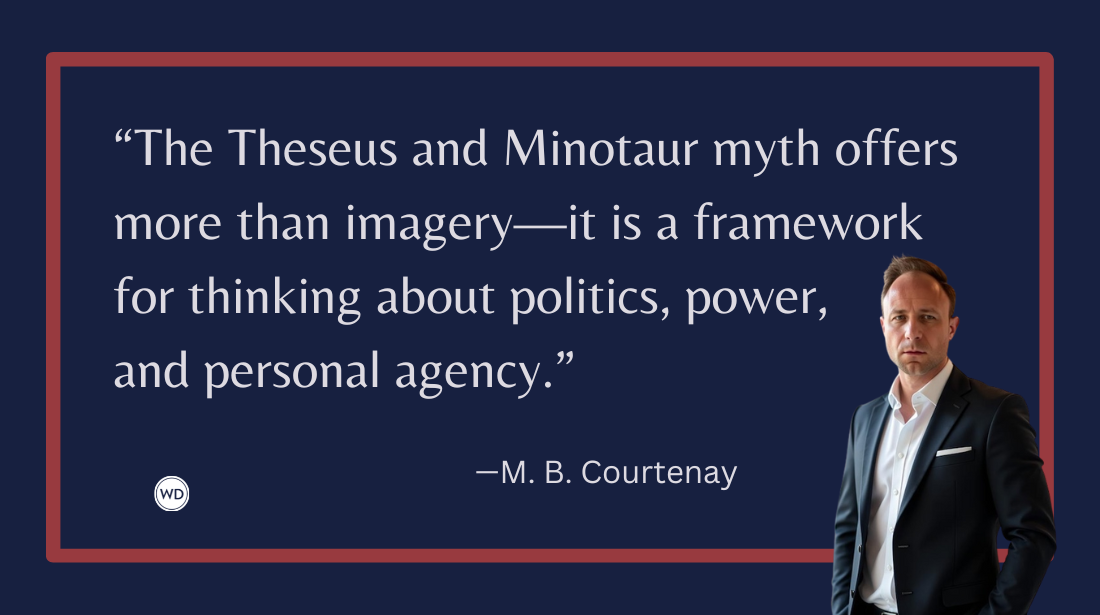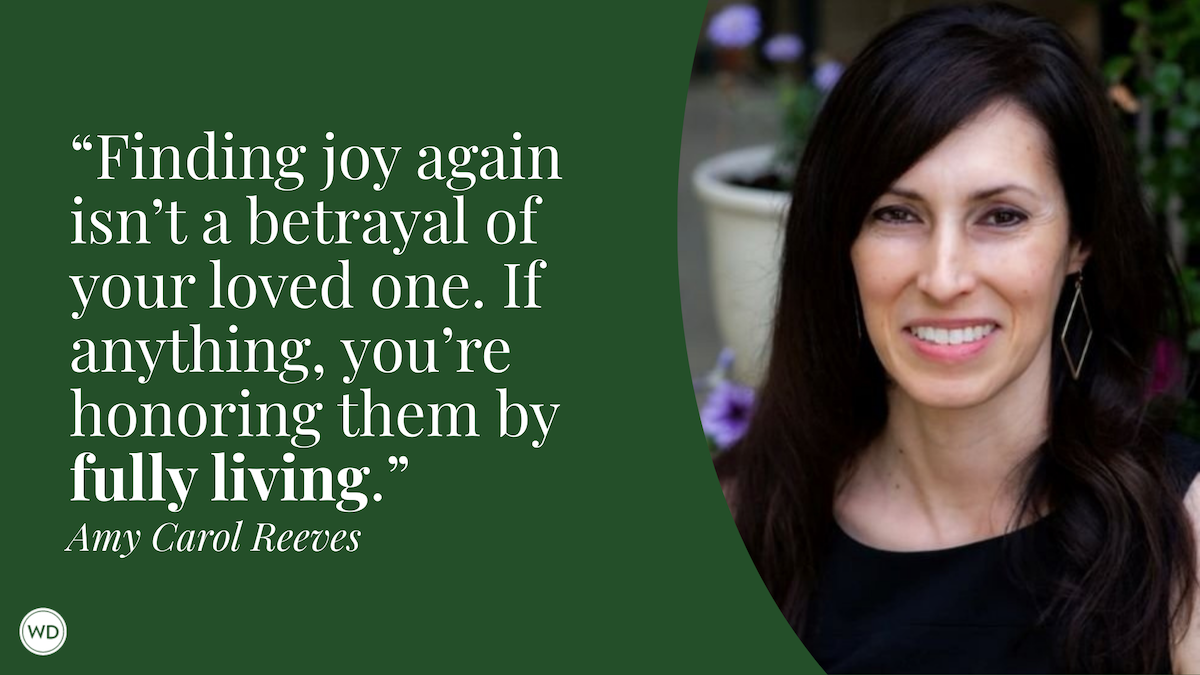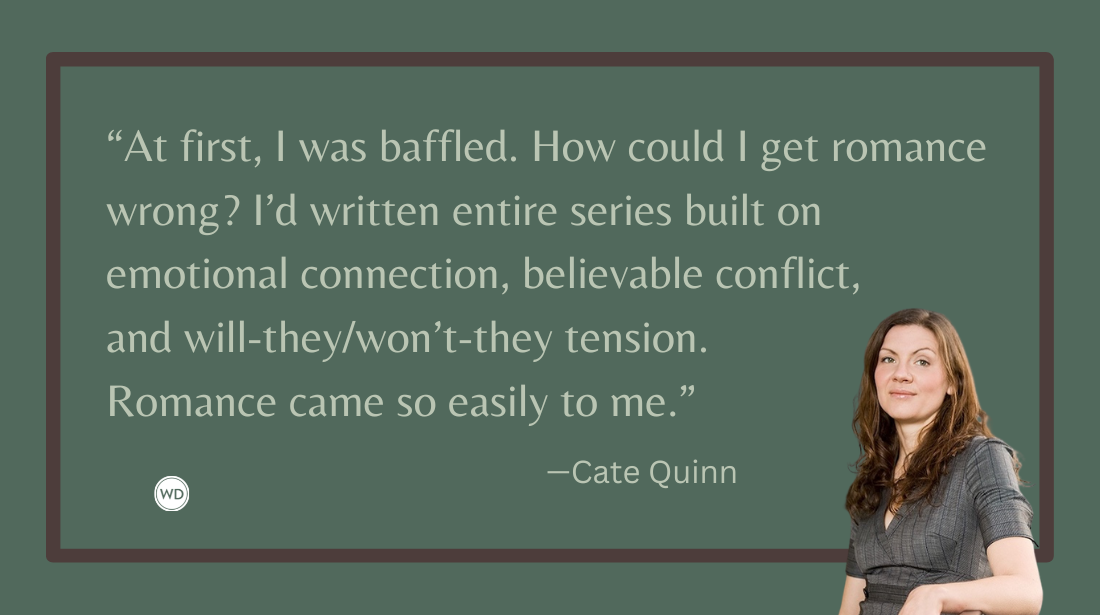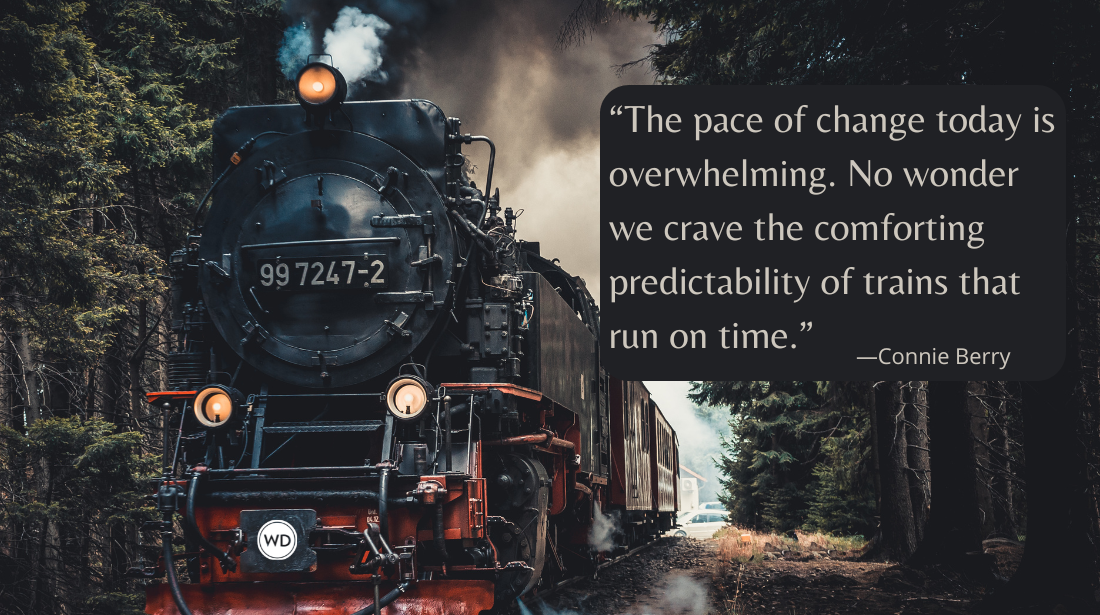7 Tips for Writing a Near-Future Dystopian Novel
In this article, debut author Christina Sweeney-Baird explains how writers can expertly craft a near-future dystopian novel.
At its best, dystopian fiction provides a completely believably insight into an alternative world. It should show the reader what this world looks like and what it feels like. A near-dystopian setting makes this easier in some ways as your starting point for the practical consequences of your "What if?" question is the here and now (or so few years away as to make little difference). And readers can, often, more easily identify with characters who are living lives similar to theirs and feel like they could be friends or people they know.
My debut novel, The End of Men, is set between 2025 and 2031 and explores the consequences of a viral pandemic that kills 90 percent of the world's men. Women are immune to the virus and try to keep their husbands, sons, fathers, brothers, and friends safe, recover, and then rebuild a world which now looks totally different with only 10 percent of the male population having survived. I've now written, rewritten, and edited The End of Men and am in the process of writing my second speculative novel, so here are seven tips that I've learned and try to apply to my own writing.
7 Tips for Writing a Near-Future Dystopian Novel
A Character Draft and a World-Building Draft
This is expectation management as opposed to substantive writing advice. Dystopian fiction, like all speculative fiction, requires rich world-building. The small details matter; in The End of Men, that means everything from the impact of most lorry drivers being men on food supplies, to the realities of childcare in a world in which there aren't enough people to populate the workforce, to the challenges of running a hospital when more nurses are women, and more surgeons are men.
I'm sure there are writers who have managed to write carefully-detailed, emotionally nuanced speculative fiction in the space of one draft but I'm not one of them. I'm writing my second speculative fiction novel now and this has only confirmed my theory that you need two substantive drafts with two separate purposes. One draft (and I don't think the order matters especially), needs to build the practical consequences of your "What if?" question. Quite simply: What happens? What goes wrong? What does that look like? How does the world change with your, "What if?" question applied? The other draft needs to dig into the emotional ramifications for your characters and ensure your characters are believable and well-drawn in a frightening new world. It's difficult to do both in one draft; don't worry about it, just assume you'll need two drafts.
IndieBound | Bookshop | Amazon
[WD uses affiliate links.]
The Beginning Sets the Scene
There are two ways dystopian novels often start. With a slice of normality—which is what I chose for The End of Men, showing what characters' lives were like before everything changes and how Station Eleven by Emily St John Mandel begins. Or with creeping unease, such as with the diary at the start of Children of Men or a prologue that jumps forward in time as in Severance by Ling Ma. Both of these approaches have their advantages. With normality, you get to know a character in their usual context and understand better what they later lose. But starting with the dystopia from the start can engage the reader straight away as the crisis unfolds. To make your beginning as engaging as possible, try writing alternative beginnings following each of these routes. What is more compelling?
What Are the Stakes?
My agent, Felicity, always asks me this question, and it's such good advice. What are the stakes? Why do we care about what's happening? What might be lost? Why do you, as the reader, need to keep reading and find out what happens next? Dystopian fiction, by definition, involves things going wrong but you need your reader to care about what's happening next. For me, that means a combination of a well-paced crisis, gradually unfurling, and characters you deeply care about. At every point, you need to be able to say, "The stakes here are X." If there are "filler" sections that seem to be information-heavy or lacking stakes, cut and/or edit so every page requires the reader to keep going onto the next.
How Does It Feel to Live in This World?
What does it feel like to live in this world? To experience the loss that this dystopia brings with it? Think of the rage that rises off the pages of The Handmaid's Tale, the terror of World War Z, the unease of Station Eleven, the longing of Children of Men. The End of Men explores practical issues but also loss, grief, resilience, and hope—it's those emotions that will keep someone reading. Information overload is the enemy of gripping prose so if you need to show the reader an element of the world, try and do it through a character's perspective in an emotionally nuanced way.
The Details Matter
Specificity is crucial for character development, setting, world-building, and so much else in fiction. When you're trying to make a reader believe they're reading an alternative world, they need to know how it smells and looks and sounds and feels. How can your setting be precise? What shops or restaurants or places of work have changed for your characters? Who are they meeting or living alongside and how have those people changed? Answer those questions with specific, carefully drawn places and people.
World-Building Is a Waterfall
Think about when you go to a wedding and there's a pyramid of champagne glasses. The first glass fills, and then overflows and the row below fills up and so on. World-building follows the same waterfall structure. For example, as in The End of Men, what if 90 percent of men got sick with a virus with almost guaranteed mortality? How many male doctors would no longer be able to work in hospital and what shortages would that leave? How many doctors and nurses, regardless of their sex, would not turn up to work because they were trying to save their families from the virus? What would happen to men and women who turned up to the hospital requiring treatment unrelated to the virus? Would you allow men in with any exceptions (for example, a child with the symptoms of a serious infection, not the virus)? And so on and so on. Obviously, those scenarios need to be built through the use of characters who are engaging and realistic so it's not just an information overload. But so much of good world-building is asking a question and then continuing to ask it until its logical conclusion, however many further questions that takes.
Do You Include COVID?
This is a question that obviously never would have been asked before 2020 but is now an important thing to consider. Now that COVID-19 is an unfortunate part of the world, should it be included in a near-future dystopian world? My view, for my own writing, is no. I was in the process of editing The End of Men for my publishers as the first months of COVID took over the world in March and April 2020. We made minimal changes to the manuscript's approach to the pandemic, preferring to keep the world depicted separate from COVID, and so it's not mentioned. I recently read a galley of a pandemic novel that chose the opposite approach in its edits—as acknowledged in the Author's Note—and, personally, found the mentions of COVID jarring. This is a personal preference although mine, as a reader and a writer, for now, is not to drag COVID into the alternative, dystopian worlds I write in fiction.
Christina Sweeney-Baird is the author of The End of Men, her debut novel, which is being published in 18 territories. The film rights have sold to a major TV studio. She graduated from the University of Cambridge with a law degree in 2015 and lives in London. She is working on her second novel.




